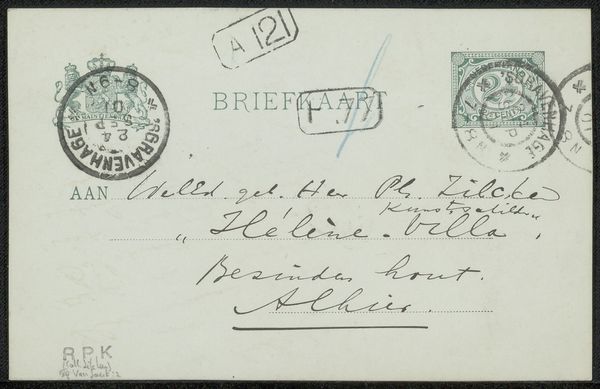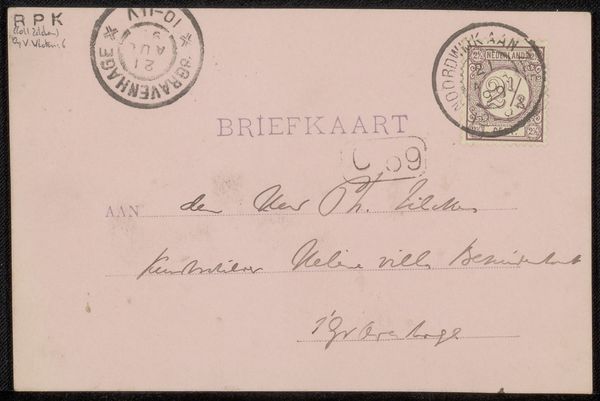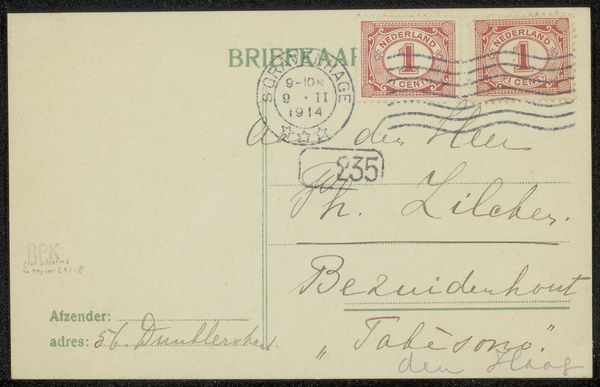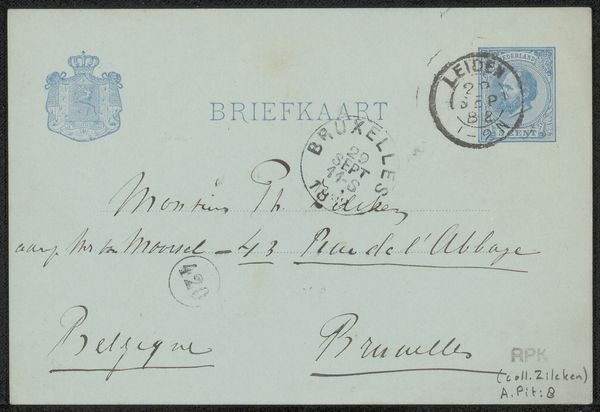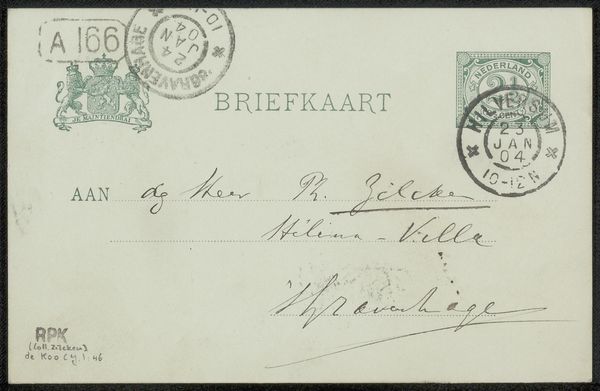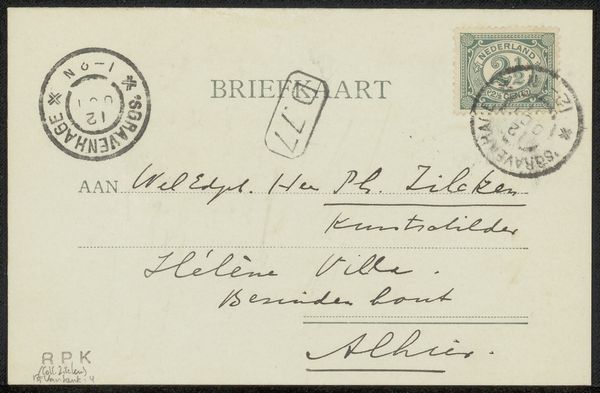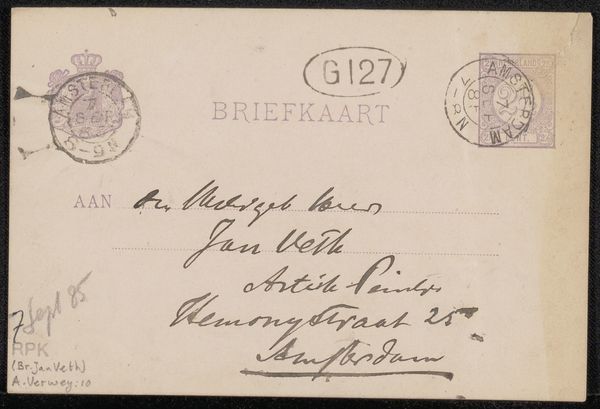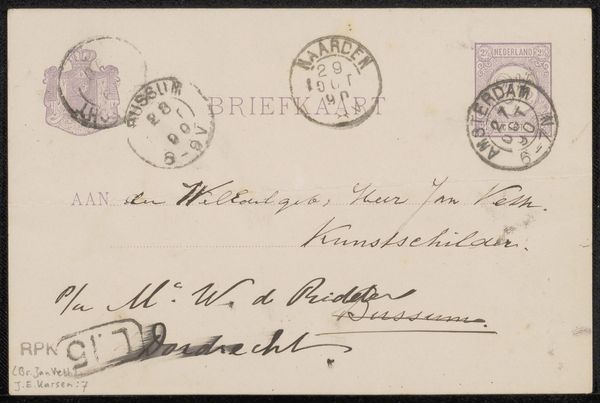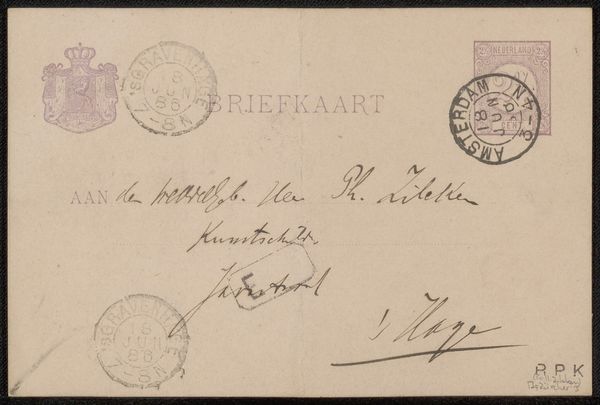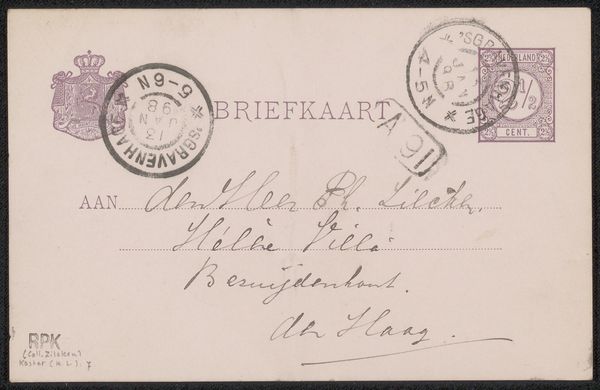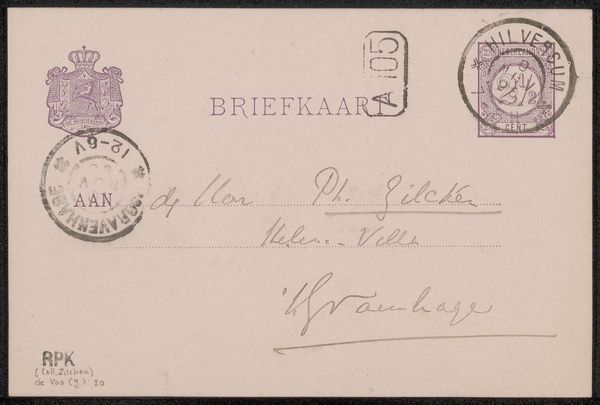
drawing, paper, ink, pen
#
drawing
#
hand-lettering
#
hand drawn type
#
hand lettering
#
paper
#
personal sketchbook
#
ink
#
hand-drawn typeface
#
ink drawing experimentation
#
ink colored
#
pen work
#
sketchbook drawing
#
pen
#
sketchbook art
#
calligraphy
Copyright: Rijks Museum: Open Domain
Editor: Here we have "Briefkaart aan Philip Zilcken," possibly from 1905, created by Karel Sluijterman using pen and ink on paper. It seems so delicate, and fragile too, but also, bureaucratic? Like a little glimpse into someone's life frozen in time. How do you interpret this work? Curator: I see this postcard as more than just a simple message; it’s a tangible connection to a specific historical and social moment. Think about the late 19th and early 20th centuries – a period marked by burgeoning communication technologies but still deeply constrained by social hierarchies and cultural norms. The handwriting, the postal markings, the very act of sending a brief card - all speak volumes about the sender's position within these structures. Consider the address. Does it hint at class, status, or access? How might the content of the unwritten message challenge or reinforce existing power dynamics? Editor: So you're saying the material and the way it was sent, or even *who* sent it, could carry as much meaning as any image might? Curator: Absolutely. Look closely at the stamp and the postal marks. They represent the infrastructure of empire and trade, the mechanisms that connected people across distances but also reinforced colonial power structures. The “Briefkaart” itself, a seemingly innocent object, becomes a vehicle for understanding the complexities of identity, communication, and control during this era. How can we read against the grain to recover these layers of meaning? Editor: That’s fascinating. I never thought about how much a simple postcard could reveal about societal power structures. Curator: Precisely! Art like this invites us to examine those hidden narratives. It's not just about the image; it's about deconstructing the cultural context in which it was created and consumed, isn't it? What do you make of that? Editor: This makes me think of other ways we use material like this - text, mail, and postcards - today. Curator: Indeed. Considering contemporary culture is the crucial last step.
Comments
No comments
Be the first to comment and join the conversation on the ultimate creative platform.
